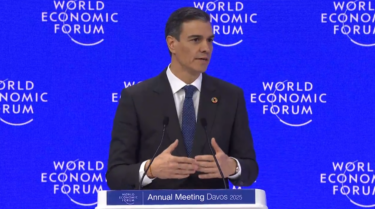Facebook, Twitter, and Google are waging a cyber war to dominate the social media landscape with a barrage of new tactics in 2016 that include taking to the skies.
In 2015 Facebook and Google stepped up the offensive in their quest to increase the global online audience. In late November the United Nations estimated this to be some 3.2 billion, leaving just 56.6% of the world’s population unconnected.
However, growth of online penetration has actually slowed from 7.4 percent in 2014 to 6.9 percent in 2015. So how are the internet goliaths acting to drive up their audience, and what role does this play in the larger digital trends we experienced in 2015?
Alphabet – the holding company formerly known as Google, along with Facebook, sought to drive the cost of a connected world down. Alphabet’s Project Loon, actually involves helium balloons released worldwide to deliver low-cost internet for the offline audience. Fifteen meters wide and described as resembling “giant, white pumpkins,” these futuristic devices could be a solution for millions across the globe.
Alphabet claims this will bring widespread economic and social benefits to those in rural or undeveloped regions that are currently not accessible through cell tower coverage.
Of course, Alphabet’s good intentions are motivated by more that simply goodwill and sharing – in opening the gateway to almost 60 percent of the world’s population the tech giants look set to acquire billions of eyeballs. When combining this with the potential mountain of ad targeted revenues, we begin to see the large monetary incentive for global user acquisition. This project parallels the ambition of Facebook’s solar-powered laser-beam drones.
While still in the early stages, these aircraft look set to further clutter the skyline, fitted with radio transmitters beaming data to the masses, not to mention Twitter’s new patent application being granted for drone technology last month.
Read More: Twitter-a-Flitter: Social media giant granted patent for ‘dronies’
Facebook’s engineering chief, Jay Parikh, acknowledged they are not there just yet, commenting, “I’m trying to manage Mark’s expectations.”
An enormous feat that may well be. Mark Zuckerberg is set on propelling his platform in every way he can. The GlobalWebIndex reported a Q3 2015 drop to 34% of users updating status’ and 37% sharing photos, down from 50% and 59% respectively in the same period last year.
The 31-year-old entrepreneur is set on growing the user base, increasing interactions and keeping these individuals engaged within the Facebook domain. Delivering a keynote address at the annual F8 developer conference in April Zuckerberg reported, “In five years most of the Facebook will be video.”
His intentions mirror those of the top players in the online world. Online behaviors are increasingly shifting to an adoption of digital video on mobile devices with a larger time spent connected. Indeed, the average user today reportedly spends 37 minutes every day on Facebook, in contrast to 43 interacting with other humans, face to face.
The average time spent continues to soar – averaging at 5 hours, 38 mins per day in the US in 2015. As costs drop, coverage increases, and digital use increases – the top players continue to bring new fantastical innovations to the stage in their pursuit of online domination. This may sound positive in theory, however, in 2015 we began to see the realities of a connected world bringing increased fears of cyber-espionage, online security threats, and corporate intervention.
Lawmakers continue to tread the very fine line between data protection and user privacy exploitation, with extremist political behaviors on online platforms laying the way for a rise in monitoring behaviors and even governmental censorship.
Read More: Proposed social media legislation in terrorist backlash a major privacy concern
The connected world is motivated and affected by world news and events. However, additional fears of censorship in 2015 arose as offerings such as Facebook’s “Instant Articles” and Twitter’s “Moments” designed to keep users in their news feed. Taking the power of news selection and distribution out of the hands of the publishing house and putting it into the executives of major social networking sites could be the driving force that determines a news revolution in 2016.












